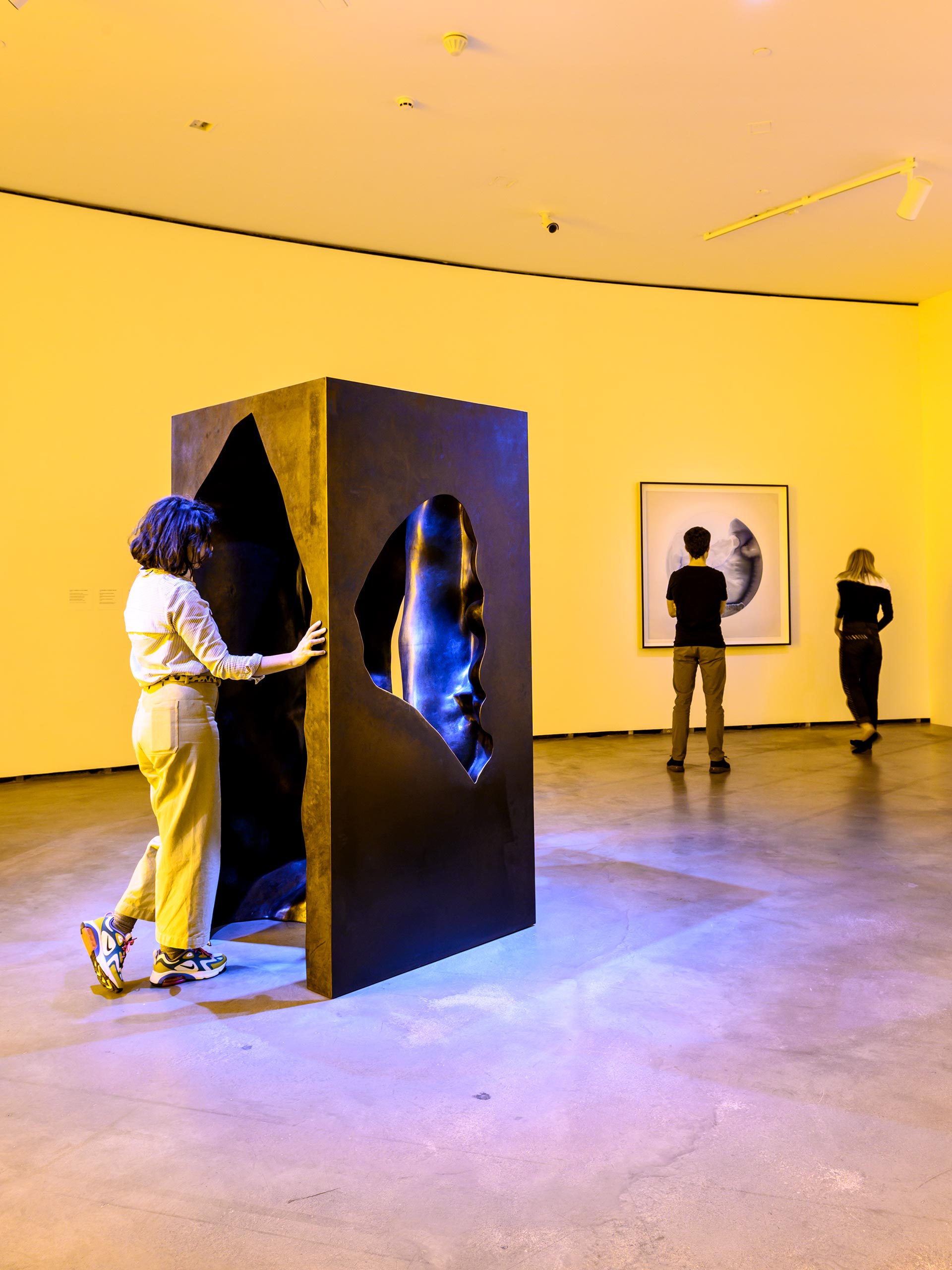Gallery 202

Eliasson often uses glacial ice in his work. Sometimes, the ice is intended as a call for action to stall climate change. Warmer temperatures have caused the Greenland ice sheet to lose around 200–300 billion tonnes of glacial ice each year, a rate that is expected to increase dramatically. In The presence of absence pavilion (2019), a bronze cast makes visible the empty space left by a block of glacial ice that melted away.
In Glacial currents (2018), chunks of glacial ice were placed on top of washes of pigment, creating swells and fades of color as they melted onto the paper beneath. Glacial spherical flare (2019) is constructed with glass made from small rock particles that result from glacial erosion.
Over the years Eliasson has created photographic series that document the country of Iceland and its natural phenomena. He has described the country as a place he needs to engage with physically—by climbing, walking, swimming or even water rafting, as in The river-raft series (2000).
Eliasson’s time in Iceland also attuned him to atmospheric conditions. This led to his interest in how artists have captured light throughout history. In Colour experiment no. 80 and Colour experiment no. 81 (2019), Eliasson analysed the color palettes of two paintings by German artist Caspar David Friedrich (1774–1840) that depict the vastness of nature: Der Mönch am Meer (The Monk by the Sea) (1808–10), and Der einsame Baum (The Lonely Tree) (1822). Each painting was abstracted into all the colors it contains. These were then distributed proportionately around each canvas to form an alternative color wheel.
Dividing this room in two is Suney (1995), an early example of Eliasson’s interest in color, architecture and perception.
The seeing space (2015), a large glass sphere set into one wall of the gallery, serves as an optical device that offers visitors distorted, inverted views of the activity in the room on the other side, where Beauty (1993) is located in a darkened space. In this work, nozzles arranged in a row spray a curtain of fine mist from the ceiling into the bright beam of a spotlight. From certain perspectives, a rainbow can be seen in the falling water; it shifts in intensity or disappears as the viewer approaches it or moves away.
